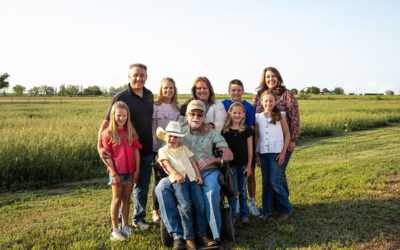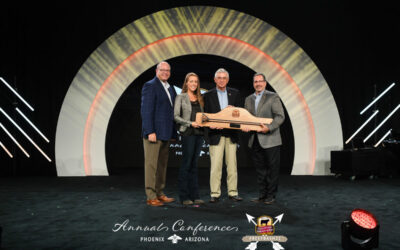
First class feeder cattle marketing
by Steve Suther
Growing up on a Colorado cattle ranch, earning an animal science degree and riding for the Certified Angus Beef ® (CAB®) brand for nearly 16 years, Paul Dykstra has learned a thing or two about “First class feeder cattle marketing.”
The beef cattle specialist presented on that concept and its evolution at Angus University during the Angus Convention, Nov. 4-6 in Fort Worth, Texas.
Before the information age, buyers usually didn’t know more than weight, sex, condition and breed type.
“That pales in comparison to all we have today,” Dykstra said, noting satellite and internet sales with buyers sitting at home. “But it brings up some interesting challenges. We don’t have to pay as much attention to relationships—marketing is less personal today than it ever has been.”
Whether online or waiting in line to drop some cattle off at the local auction, producers don’t have to really know anybody, just record where to send the check.
“An average job of feeder cattle marketing is easily achieved,” Dykstra said. The first-class kind takes attention to detail and relationships, but not necessarily a big dollar investment “to market what is essentially your genetic product in those feeder cattle.”

He noted some seedstock producers do have effective customer service programs that buy or link buyer to seller and all agree it helps their bull sale average.
“But you may overestimate the time and money others spend on commercial marketing,” Dykstra said. “There is much opportunity and it doesn’t have to be complicated.”
CattleFax data says half of all feeders sell at sale barns, the rest through direct trade, forward contract via satellite or held through retained ownership. More important than the method, however is the commandment to “Know thy customer,” he said.
Dykstra, who has a ranching interest in western Nebraska, asked, “How many cattle feeders do you know, and how many know your name? There are so many names out there—it can pay to have, say, five that you know and trust, that know something about your genetics.”
He addressed those who stress maternal genetics to differentiate those from “terminal” carcass cattle.
“I’ve seen the carcass data on the maternal cattle and it’s also excellent,” he said. “We have the diversity within the Angus breed to do both at the same time.”

Knowing the feedyard customer means understanding the need for uniformity, sorting off the tail enders or discussing them in advance. It means knowing the weaned advantage takes 45 days or more—better to ship directly off the cow than to cut days off that time. It means knowing the performance measures, gain and grade, and listing where sires rank by percentile for the related expected progeny differences (EPDs), Dykstra said.
“Make no assumptions of your customers’ knowledge about your cattle,” he said. “Your reputation matters, but it’s affected by those parameters in the feedlot as well as the packer reports on quality grade, yield grade, dressing percent, specialty programs and outs. If those are above average, it’s your job to tell the feedyards.”
Any genetic advantage must be communicated at sale time if it is to affect price, he noted.
It’s not so easy to obtain performance and carcass data on your cattle, typically requiring some cooperation from the feedyard, which Dykstra pointed to as a basis for building relationships.
“You may not want to walk away from that by using information they shared against them in the market,” he said.
To build relationships, ask yourself why you wouldn’t feed any set of cattle yourself, Dykstra suggested: “That’s what your customers need to know, and the answers show the path forward.”
Seedstock producers can play a role in coordinating a health program and pooling calves from customers who have too few to make a load.
At every step in the beef supply chain, keeping one question in mind will build your reputation, he said.
“What does your brand stand for? You’ve got to have standards and you’ve got to stand by them.”
You may also like
Showing Up, Every Day
Thirty-five thousand cattle may fill these pens, but it’s the Gabel family who set the tone for each day. Steve and Audrey persistently create a people-first culture, echoed by their son Case and daughter Christie, who work alongside them in the yard office. The Gabel’s drive to effectively hit the high-quality beef target earned Magnum Feedyard the CAB 2023 Feedyard Commitment to Excellence award.
Like Father, Like Daughter
For Hands, there’s no short answer to anything. Problems are approached with thoughtful consideration to every possible outcome. Solutions are executed with care. It’s more than a suggestion on how to treat everything from people to cattle to equipment, it’s simply the Triangle H way. They work to be the best in everything they do – a mindset that he’s passing on to his daughter.
Triangle H Named CAB Feedyard Commitment to Excellence Honoree
At Triangle H, problems are met with careful consideration of every possible outcome, solutions executed with care and evaluation. It’s simply how they deal with every challenge from people to cattle to equipment. Work to be the best in everything they do – a mindset Hands is passing on to his daughter. Their sharp focus on quality and thoughtful customer service earned Triangle H the 2022 Feedyard Commitment to Excellence Award from CAB.



